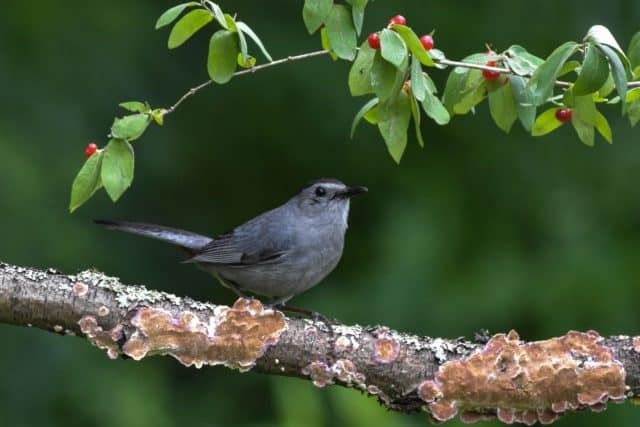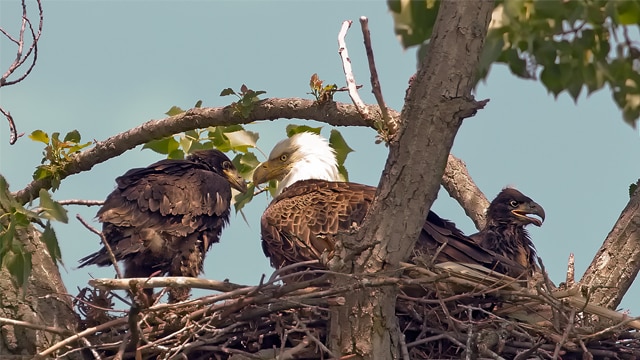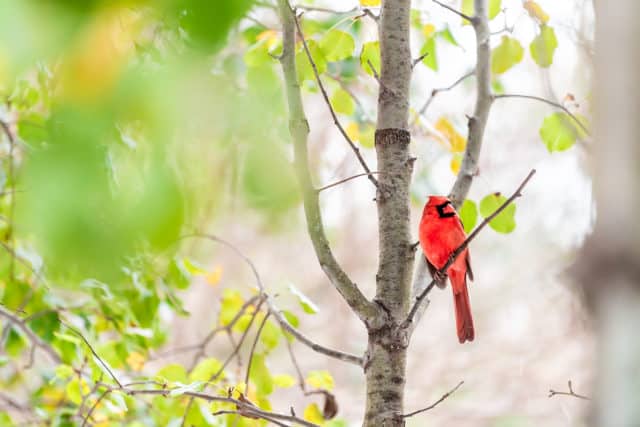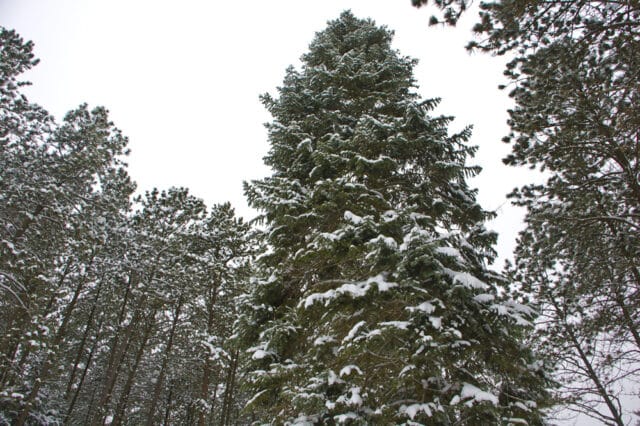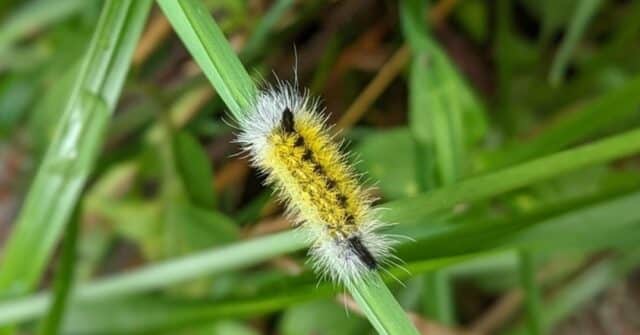
By: Alyssa Zearley, Nursery Technician
Berries are an important winter food source for animals. This is especially true for songbirds. While some birds like cedar waxwings eat fruit all year long, other birds like black-capped chickadees and bluebirds primarily eat fruit in colder weather when their insect prey is unavailable. In exchange for a meal, songbirds spread the plant’s seed to new places. Birds and berries have evolved together, developing relationships over thousands of years. Berry size, color, taste, nutrition, and ripening time are all designed to attract certain birds at certain times to maximize the seed’s chance of success. For example, many berries are red in color. Most mammals cannot see red, but birds can. Plants with red-colored berries are in effect “saving” their berries for birds only, as birds can disperse seeds over greater distances than mammals. The ancestors of humans evolved red color vision to better find ripe berries and fruit! Another sign of co-evolution is that many berries are palatable to birds, but not to mammals. Pokeberries (Phytolacca americana) are toxic to mammals, while others, like peppers, developed unpleasant tastes like spiciness which affect mammals but do not seem to bother birds.
Not all winter berries are created equal, however. Introduced, non-native plants like honeysuckle (Lonicera spp.), callery pear (Pyrus calleryana & cultivars), privet (Ligustrum spp.), and others produce ample winter fruit that birds consume. However, the proliferation of these species in our yards, parks and natural areas does more harm than good. These berries tend to be high in water and sugars and lower in fat, protein, and nutrients than our native berries, making them less nutritious for our overwintering and migrating bird species. Invasive species displace native plant species, reducing the amount of nutritious food options for birds. Native trees and shrubs also host many more caterpillar species than non-native plants. Before berries ripen, native plants provide food to birds in the form of the caterpillars they support. Caterpillars are particularly important for hatchlings.
There are many beautiful native shrubs and trees which can be planted to support birds in winter. Replacing honeysuckle, callery pear, privet, and other invasive species in your yard provides a dual benefit of providing a better food source on your property and protecting nearby wildlife areas from invasion. The plants listed below are widely available at native plant nurseries and garden centers and are often offered at the Arboretum’s spring and fall plant sales. Here are a few examples of native ornamentals that can attract birds to your yard in winter.
Spring blooms: Dogwood (Cornus spp.)
While flowering dogwood trees (Cornus florida) are well-known, their shrubby cousins are an underrated landscape plant. Dogwoods have vibrant pink-red fall color and grow quickly. Grey dogwood (C. racemosa) has white berries and works well in mass plantings or as a shrub border. Alternate-leaf or pagoda dogwood (C. alternifolia) is a large shrub reaching 15-25 feet. Red osier dogwood (C. sericea) has red stems that stand out in winter. Silky dogwood (C. amomum) has silvery-blue berries and is well-suited for woodland edges.

Shade-tolerant: Spicebush (Lindera benzoin)
Spicebush is typically found in forest understories, but this adaptable shrub can be grown in both shade and sun. Spicebush has dainty yellow flowers which light up forest understories in spring. The red berries are quickly gobbled up by birds. Look for the native spicebush (Lindera benzoin) and avoid nonnative species. Only female plants bear fruit, so plant several shrubs to ensure fruit production.

Winter interest: Winterberry (Ilex verticillata)
For a real showstopper in winter, choose winterberry (Ilex verticillata & cultivars). This deciduous member of the holly family produces bountiful clusters of bright red fruit. The fruits hang onto the branches all winter, a habit which gives this plant its name. Only female plants produce fruit, so plant many specimens to ensure you have a male and female. Examples of winterberry can be found outside the Corning Visitor Center at the Arboretum campus.

Evergreen: Juniper (Juniperus spp. & cultivars)
Junipers are hardy, resilient trees that can grow in a variety of conditions. Their blue “berries” are rich in fats, making them especially nutritious for birds. These “berries” are actually modified cones which evolved to be spread by birds. Only female trees produce berries, so either plant multiple specimens or choose a berry-producing variety. Eastern red-cedar (Juniperus virginiana) and common juniper (Juniperus communis) are native to this area. Examples of eastern red-cedar can be found along the north perimeter of the Arlene & Arthur S. Holden Butterfly Garden. The cultivar of common juniper, Juniperus communis ‘Gold Cone’, with showy, yellow new growth in the spring can be seen in the Display Garden.

Shade tree: basswood (Tilia americana)
Basswood, or American linden has fragrant summer flowers and heart-shaped leaves. This quick-growing tree produces small, dry fruits which persist into the winter. This adaptable tree has many available cultivars. A similar, commonly-sold species, littleleaf linden (Tilia cordata), is not native to North America.

